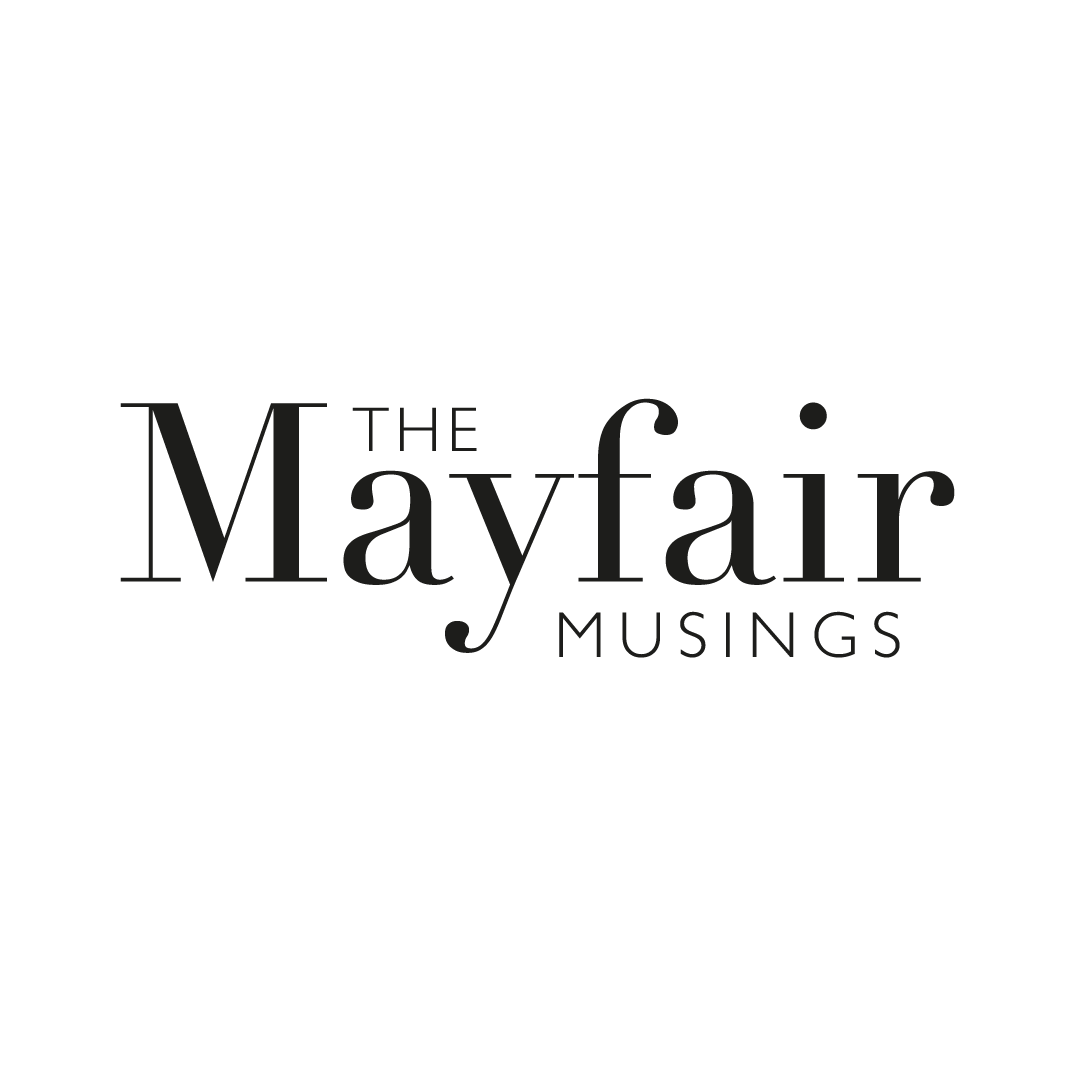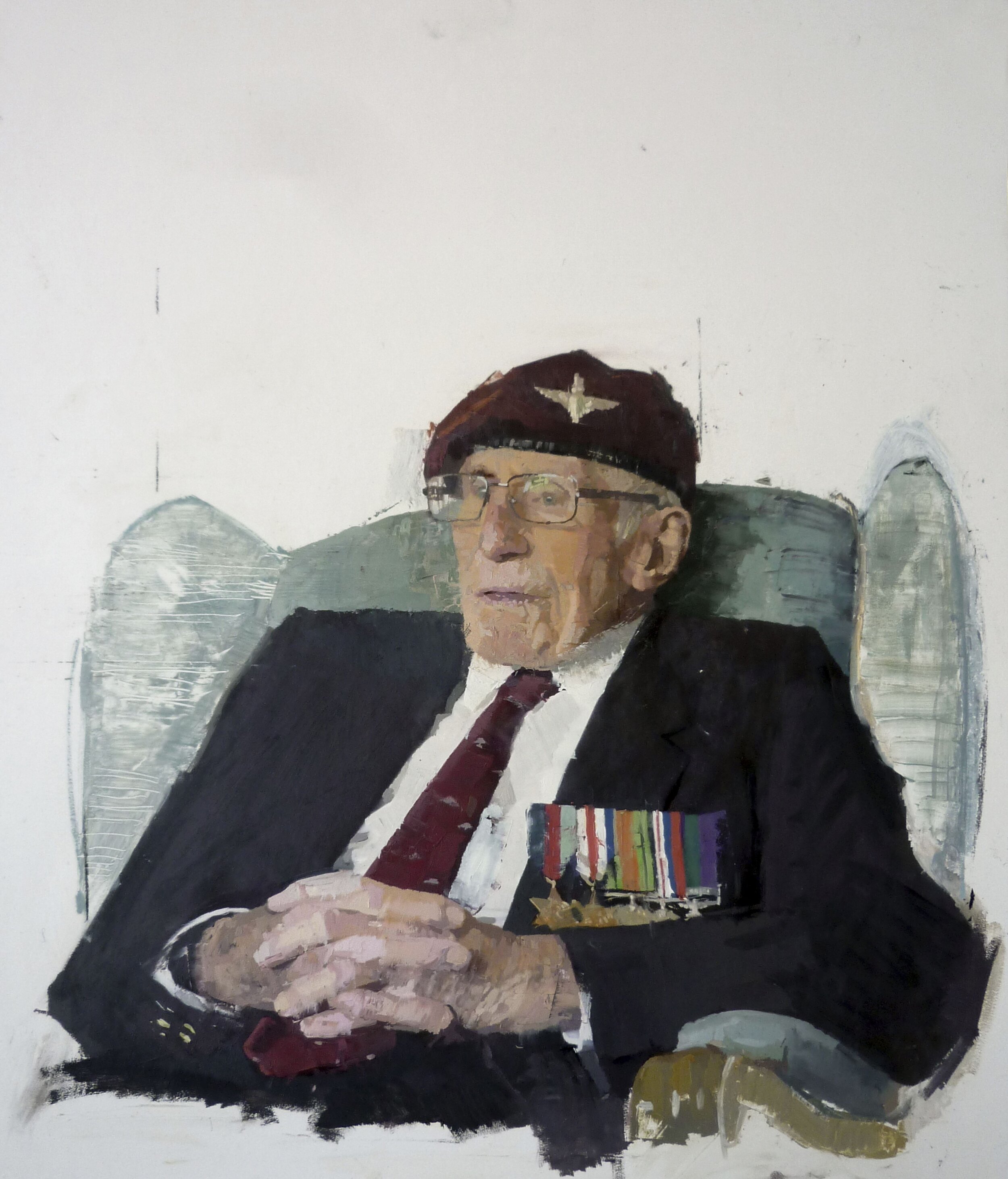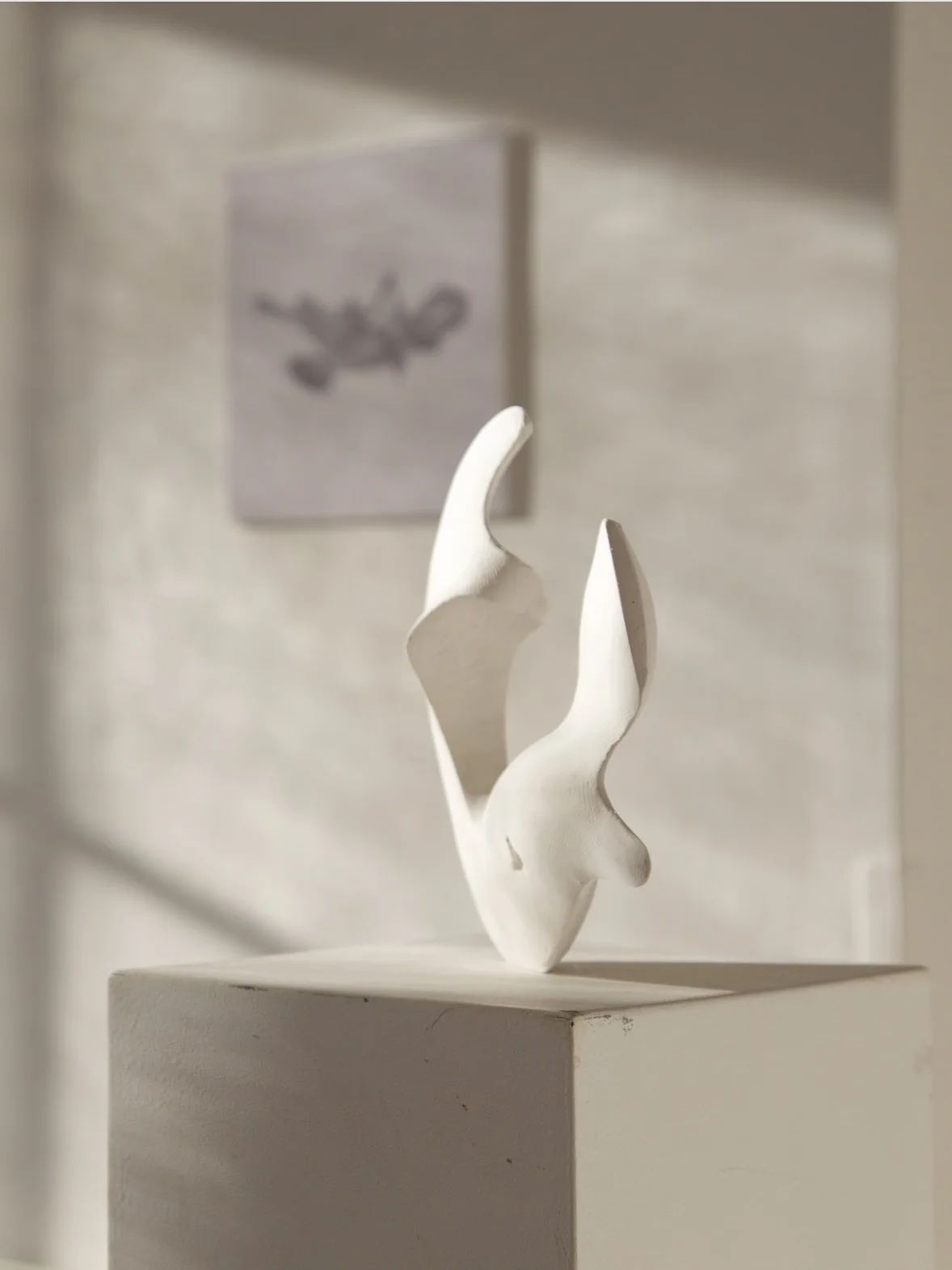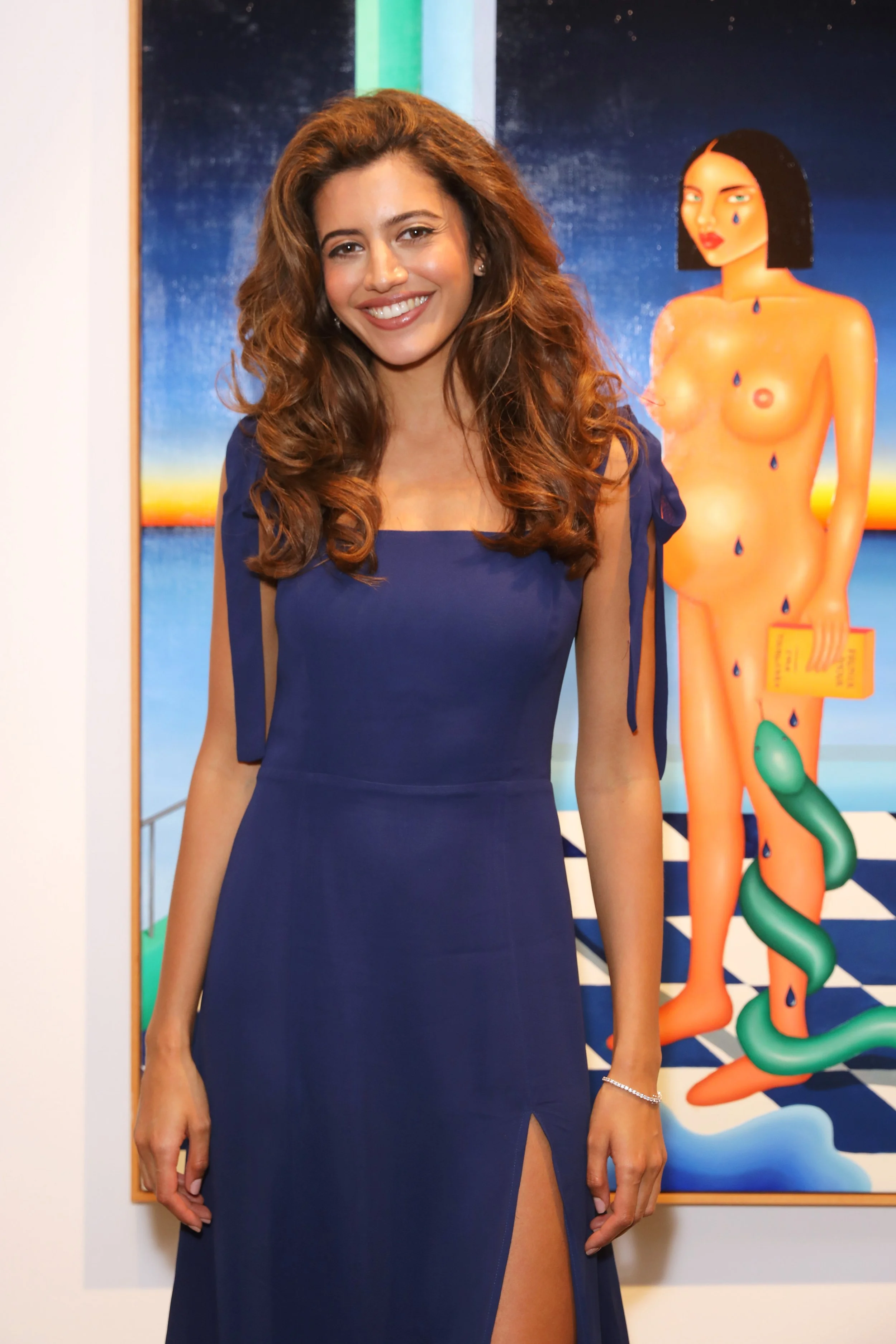10 QS WITH EILEEN HOGAN AHEAD OF HER BROWSE & DARBY EXHIBITION
Browse & Darby have announced that Personal Geographies will arrive in October, the second solo exhibition by esteemed British painter, Eileen Hogan. Hogan’s principal subject is gardens, or more specifically, enclosed green spaces. The beautiful works that will be shown in Personal Geographies have travelled all the way from the US, where they formed part of the artist’s recent exhibition at the Yale Centre for British Art.
I was very blessed to have the opportunity to catch up with Hogan ahead of her Mayfair exhibition. I find myself entranced by her vibrant paintings that are dense with detail, filling the canvas from edge to edge with layers upon layers of paint. She has also established portraiture practice, her commissions including HRH The Prince of Wales. In a unique style, Hogan paints her sitters whilst they are deep in conversation, capturing unguarded gestures and expressions to create intricate portraits of both honesty and intimacy.
1.) Hello Eileen, welcome to The Mayfair Musings! Where did your painting journey first begin?
Throughout my childhood I made drawings all the time from my imagination. There was no art in my background and I was introduced to paintings at my Roman Catholic primary school. A well-meaning nun noticed that I was always scribbling and lent me a book of religious paintings to take home, telling me that heaven would be like lying on my bed on a Sunday afternoon, leafing through the book. Actually, it was my idea of hell. Sunday was the worst day in my house. My notion of heaven was getting away, with the dog in tow, and drawing while sitting on Tooting Common - the green space closest to my home in South London.
I lost the common as a place to go when I became ill with rheumatic fever at age nine. I spent over a year in bed, where I read and sketched all the time.I began to draw in a “proper” sketchbook for the first time when I was twelve years old, and started then to include real people - my grandmother, for instance. Tooting Common still featured a lot. When I was fourteen, my art teacher at secondary school sent me to Saturday morning classes at Camberwell School of Arts and Crafts. I was offered a place on the Foundation course there, followed by a degree course in the Painting School and then post graduate studies at the Royal Academy Schools and the Royal College of Art.
Eileen Hogan, Robert Antony Leake
2.) How would you describe your painting style?
I describe myself as an urban-based painter who is interested in green spaces. Painting and drawing have been seen as profoundly unfashionable for most of my working life, and I have felt sometimes that it was quite eccentric to be a figurative painter with conventional subject matter. Looking back, my insistence on maintaining my practice as a figurative painter now seems more radical than conventional.
3.) Can you tell us a little about Personal Geographies, your upcoming exhibition at Browse & Darby?
This follows on from my recent retrospective at the Yale Center for British Art which took place from May to August this year and was accompanied by the book ‘Eileen Hogan:Personal Geographies’ published by Yale University Press. This is my second exhibition at Browse & Darby and will contain much of the work that was shown at Yale.
Eileen Hogan, Bethnal Green, 9th April 2016
4.) What attracts you to the beautiful gardens and enclosed green spaces featured in your work?
I have painted London’s green spaces since I was a child, but during 2015 - 16 I was appointed artist-in-residence at the Garden Museum in London. The museum building was actually closed for major renovation at the time and the gardens completely inaccessible, so I decided to create a “virtual garden museum,” describing myself as an “artist-not-in-residence.” I invited (in a rather random way) a number of people - friends, colleagues and people associated with the museum - to nominate a London green space that was important to them and to describe why; I then visited those places and took some of them as my subject matter.
The accounts of why the gardens had been chosen included horticulture, history, art history, personal psychology, private myth, romance, and eccentricity. I expected people to choose major public parks, but this was not the case. In fact, what was unexpected was how people loved the neglected. People also seemed to love the familiar, places they came across every day. I became very interested in what the dynamic of the garden is. Somewhere to go and work, or somewhere to go and play. Somewhere as sanctuary, or somewhere to walk.
In an essay for the book that accompanied the Garden Museum exhibition, Nicola Shulman described the project - which is still ongoing - as a “quest or treasure hunt, a giant board game played in the real world, with the map of London as the board and Hogan as the principal piece, her moves determined not by dice but by the co-ordinates of her friends’ choices - which cast her to every odd corner of the city.”
Eileen Hogan, Kensington Gardens, 17th May 2017
5.) Do you have any favourite green spaces in the UK?
Little Sparta, which is a garden created by the artist and poet Ian Hamilton Finlay. I was intrigued because it’s an enclosed garden. I’m very interested in enclosed gardens, and green spaces in an urban environment have always been a key part of my work. Little Sparta is enclosed by moors, rather than buildings, but what excites me, as with (London’s) urban squares, is the contrast between the garden and its surroundings. I’ve rarely worked in the open landscape, and it was this distinction between the world Ian had created and the farmland which abuts it, that really fascinated me, and allowed me to recognize Little Sparta as an important place for me.
Eileen Hogan, HRH The Prince of Wales
6.) You've also been painting beautiful portraits involving conversation - can you tell us a little about this?
For over ten years I have been painting portraits while an oral historian made an audio recording with the sitter (this is part of a National Life Stories oral history project at the British Library Sound Archive). This has meant that I have witnessed the telling of in-depth autobiographical narratives without myself being the centre of attention. I have been free to register the relationship between spoken testimony and the facial movements of the narrator who, in turn, becomes the subject of my drawings and subsequent portraits. I have found that I am interested in the nuances of delivery and in watching people’s faces as they talk about their lives.
During each session, I draw in my sketchbook and make studies of the person’s head on larger paper, using pencils, oil paint, and wax. Returning for successive sessions with the oral historian, I come to know each face in detail. I am able to witness changes in energy and mood from one month to the next as they recount the harrowing and joyful details of their lives, as well as note more literal alterations, like a different hairstyle or piece of clothing. I listen as I draw, and allow the sitter’s story to enhance my understanding of the person. I watch each person as they speak about the intimate aspects of their lives and I observe the effect that this has on their faces and gestures. I draw and paint them while they more or less forget I am at work.
Eileen Hogan, SW Gardens- Kew Bluebells
7.) When selecting someone to paint, what do you look for?
I don’t select the person, they have been chosen to be the subject of the oral history recording. Recently I have accepted some commissions from HRH the Prince of Wales to paint two D-Day veterans, himself and the Duchess of Cornwall. Versions of all these will be in the exhibition at Browse & Darby.
8.) Establishing your visual language as an artist can be daunting and challenging in the beginning, particularly if you lack confidence. What advice do you have for young artists looking to venture into a full time art career?
I think it can be a very lonely and frustrating business being an artist and you have to really want to do it. It’s important to find out what really matters as subject matter and what you really care about. It’s also very hard work and important to remember that you will need to be dedicated and to put in as many hours as a top class sportsman does.
Above: Eileen Hogan, Chelsea Physic Garden 2, 2016 | Cover Photo: Eileen Hogan, Portrait in Studio, 2015
9.) I must ask you about your studio! On an ideal day of painting, how will your studio space look, sound and feel?
Since 2012, I have painted in the studio that for nearly fifty years belonged to Leonard Rosoman, one of my former tutors at the Royal College of Art and there are some traces of him in the studio. For instance he used a mirror on a hinge to gain a different perspective on his paintings. I have kept catching glimpses of myself in that same mirror while I worked and began making daily studies in my sketchbook. I came across my image in gradual, stealthy, and unexpected ways and have painted a number of self-portraits. The artist Michael Andrews, whom I admire, occupied the studio next door for a number of years so there is a sense of history there, as well as being a very light and quiet space.
Eileen Hogan, Chiswick House, 29th January 2016
10.) We all need time to switch off. When you're not busy painting, teaching and advising, where can you be found?
Because I draw all the time and because my life is so intertwined with my work, I am likely to be found with a sketchbook in my hand, or not far away, whatever I am doing.
Browse & Darby
Housed in an eighteenth century building on Cork Street in the heart of London’s Mayfair, Browse & Darby first opened the doors to its iconic gallery in 1977. In the four decades since, the gallery has continued to specialise in Contemporary British figurative works, alongside late nineteenth and twentieth century British and French paintings, drawings, prints & sculpture. Browse & Darby began as collaboration between distinguished art dealer and historian, Lillian Browse and prominent art dealer William Darby. Since 2007, the gallery has been run by Joshua Darby and Charles Bradstock.
Personal Geographies: 9th October - 1st November 2019 | Open: Monday - Friday: 10.00 - 5.30pm; Saturday by appointment | Admission: Free
Address: 19 Cork Street, London, W1S 3LP | Telephone: +44 (0) 20 7734 7984














